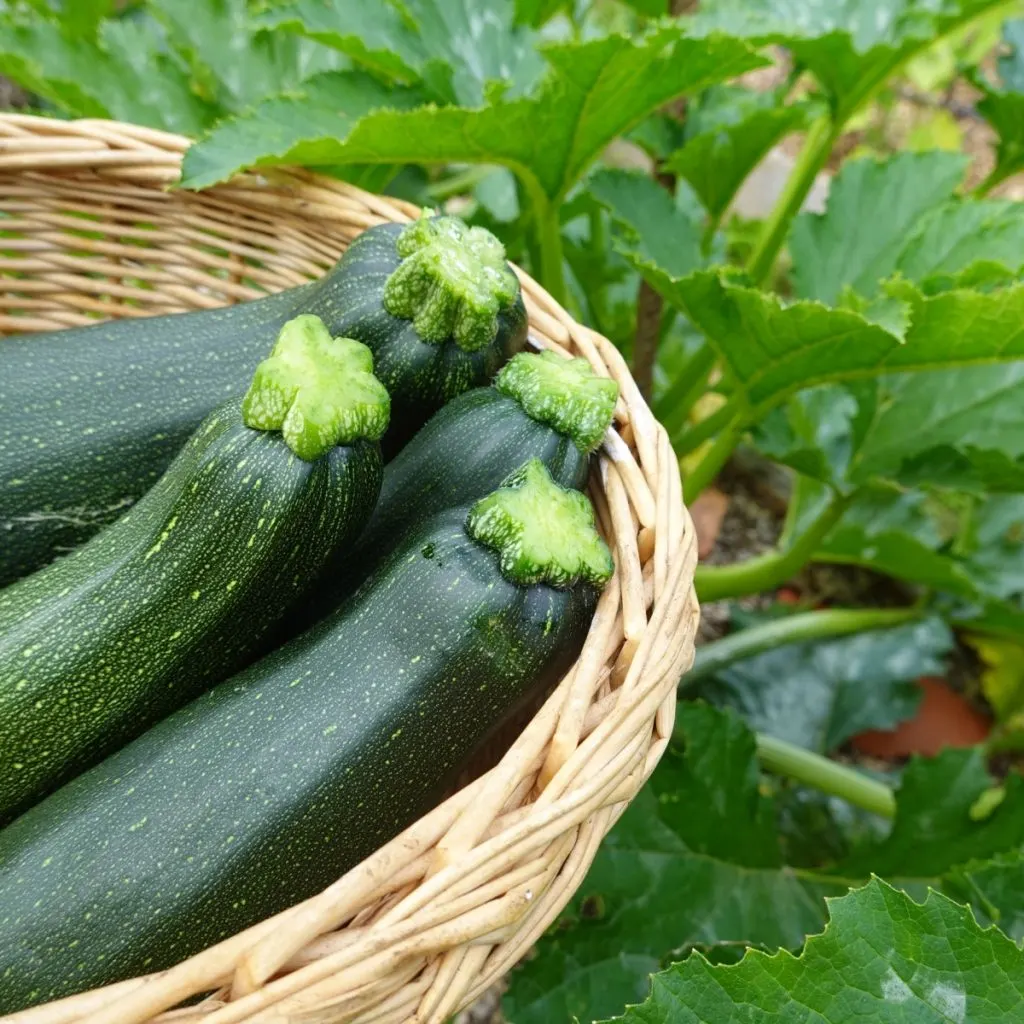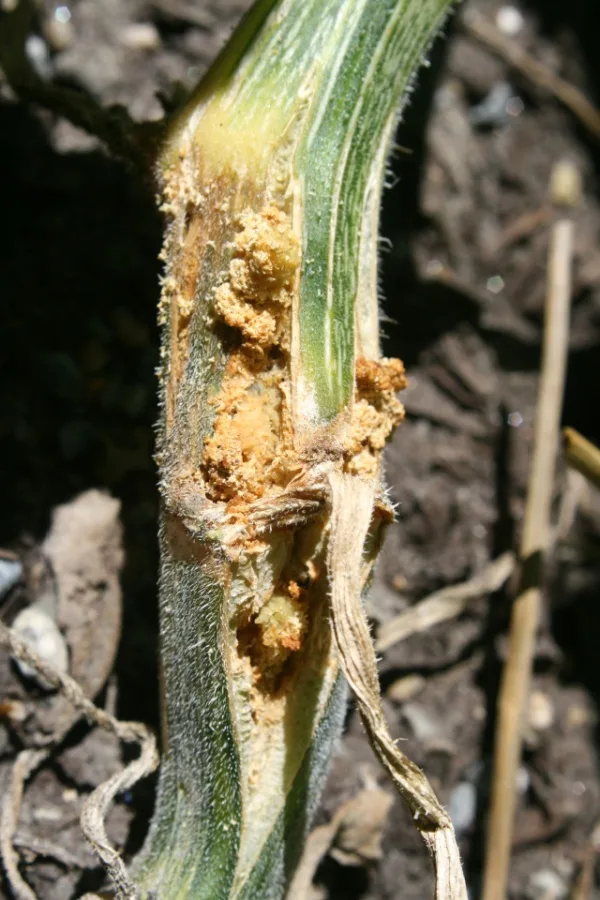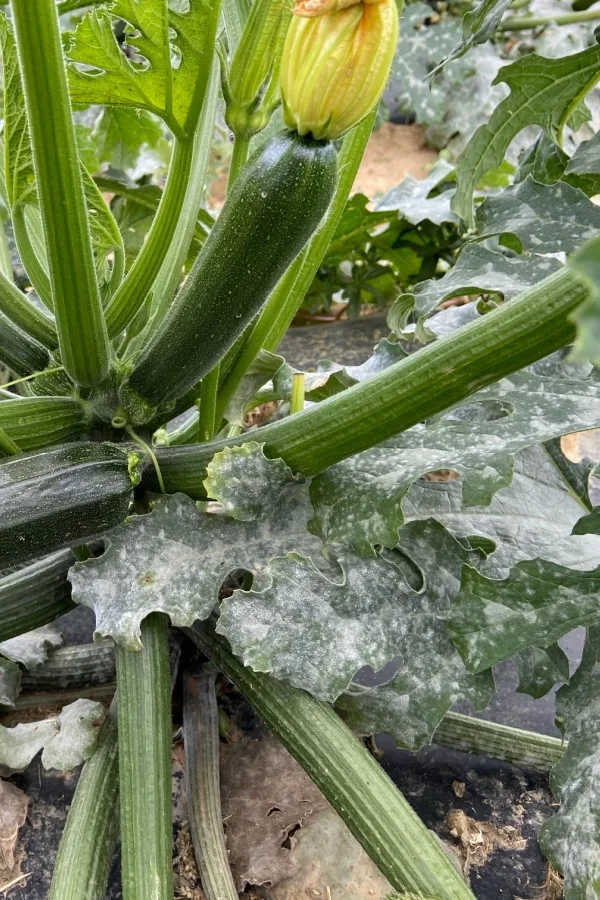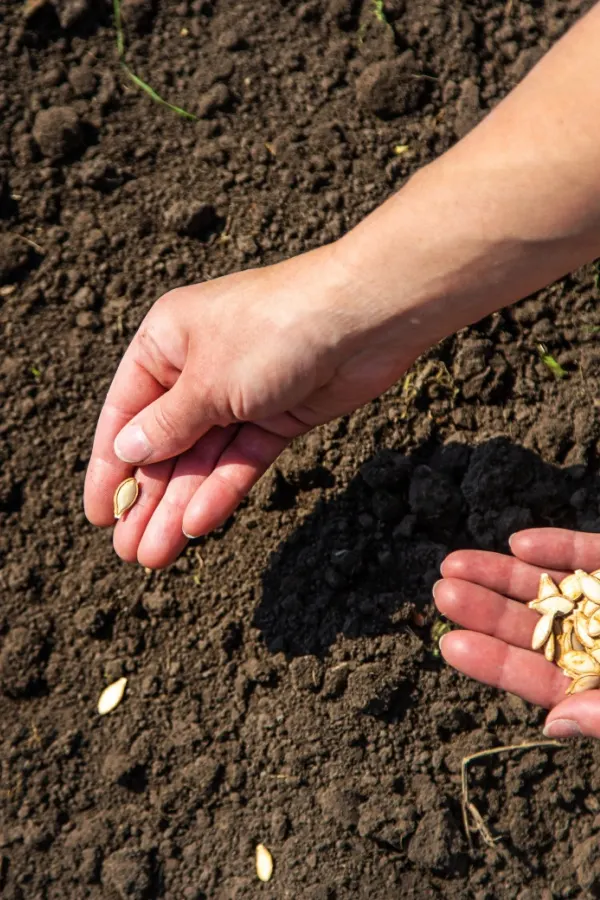Did you know that it is possible to replant zucchini in the summer – all by using seeds? Not only is it easy to do, but it often results in plants that are far healthier and much more productive than those planted in the spring.
Zucchini is a wonderful crop to grow in many home gardens. A single plant can provide enough vegetables for a whole family to enjoy, often on a daily basis. That is, if they stay strong all summer.
Zucchini plants are prolific growers and producers. But by the middle of summer, spring-planted plants often start to run out of energy and steam. Simply put, as the plants age, they start to slow way down in their production.

Unfortunately, if it’s not the hot summer sun causing the plants to grow weak and damaged, it’s pests and disease that often take hold after the plants have been growing awhile.
Mid Summer Planting With Seeds
But here’s some great news – as you will see below, nearly all of the issues that can spell trouble for zucchini plants by mid summer are long gone by late summer and fall. So by simply planting a new crop in the summer, you can easily enjoy a care free crop. The best part of all? You can do it quickly with seeds. In fact, zucchini seeds only take around 45 to 55 days from planting until they start producing.
This leaves plenty of time to get plants rolling long before the first frost arrives, greatly extending your harvest. With a bigger and better zucchini harvest in mind – here is a look at why replanting in the summer with seeds makes so much sense – and how to do it like a pro!
How & Why To Replant Zucchini In The Summer – With Seeds!
The Perils Of Spring Planted Zucchini
Planting zucchini in the spring comes with a whole host of challenges. First off, when zucchini transplants or seeds get planted in early spring, the soil is often not warm enough to really get plants growing strong right from the start.
The cooler ground can cause plants to have delayed growth or at the very least weaker root systems. Often, transplants are the only option in spring as the seedlings just grow too slowly. And that of course can be more expensive if you have to purchase your plants.

Not only that, the extra moisture that tends to occur in late spring or early summer and the cooler soil often leaves plants more susceptible to issues like powdery mildew – which can all but spell the end for zucchini plants.
Another tough aspect of growing zucchini plants in the spring is fighting off pests and bugs. The most devastating of which is the squash vine borer.
As the vine borers feed, the stems start to rot from the inside out. Before long, the entire plant wilts within a few days without any outward signs of damage. In addition to vine borers, squash bugs are also another common pest issue for zucchini plants in early summer.

Why To Replant Zucchini With Seeds In Summer
For all of those reasons and more – it’s easy to see why zucchini plants can’t often make it the whole growing season. But that’s exactly where replanting with seeds in the summer can save the day!
Unlike in the spring, by the middle of the summer, the soil is warm from long daylight hours and direct sunlight. This makes it easy for zucchini seeds to quickly germinate and start growing almost immediately.
In fact, they germinate and grow so quickly, there is no need to grow from transplants. Not only that, the seeds grow so quickly, that they are able to withstand any pests or issues that might still arise even with a summer planting. And stronger, more mature plants equals healthier plants.
Even better, most of those pests mentioned earlier are actually long gone by the time the summer crop sprouts and grows to maturity.

Last but not least, the large swing in temperatures from daylight to nighttime is also gone by the time the middle of summer rolls around. There is also less moisture in the air since frequent spring showers are over. Both these scenarios help to keep powdery mildew in check.
How To Best Replant Zucchini In The Summer With Seeds
It’s best to select zucchini seeds with a shorter maturity time. One of the best is the Black Beauty variety which can grow and produce fast! Affiliate Product Link: Burpee Black Beauty Zucchini Summer Squash Seeds
Before you plant your zucchini seeds, it’s important to first recharge the soil. This is especially important if you had another crop or type of planting growing in the same location. See our article: 4 Secrets To Make Great Compost!
The best way to re-energize soil is by adding compost to the soil. Simply mix a few inches of compost or into the top layer of soil to prime it with plenty of nutrients and organic matter. All of these resources can be there to help power the newly planted zucchini seeds.

Before planting, to help zucchini seeds germinate even quicker, soak the seeds in distilled or purified water. This only needs to be done for a couple of hours prior to planting. This will help to soften the outer shell and allow the seeds to sprout fast.
Plant In Mounds…
Zucchini grows best when planted in mounds or hills. Using a mixture of compost and soil, create a mound that is around 4 to 6 inches tall and around 18 inches in diameter. Once again, by adding compost to the mound the seeds will get plenty of nutrients early on.
On average, allow about three to four feet between each mound. This will give your zucchini plenty of room to grow and mature without crowding. Sow 3 to 6 seeds equally for each mound. Lightly cover with soil and water well. After the plants have germinated and grown a few inches, you can then thin them to the best three plants.
By replanting your zucchini plants in the summer using seeds, you are not only saving money but you can grow healthier, stronger plants that you can harvest from up until the first frost!
Simple Garden Life
Follow Our Facebook Page For Even More Great Tips! Simple Garden Life Facebook Page
Simple Garden Life is a website dedicated to keeping gardening fun, simple and enjoyable! We publish two new articles each week along with a new garden podcast episode every two weeks. This article may contain affiliate links.
